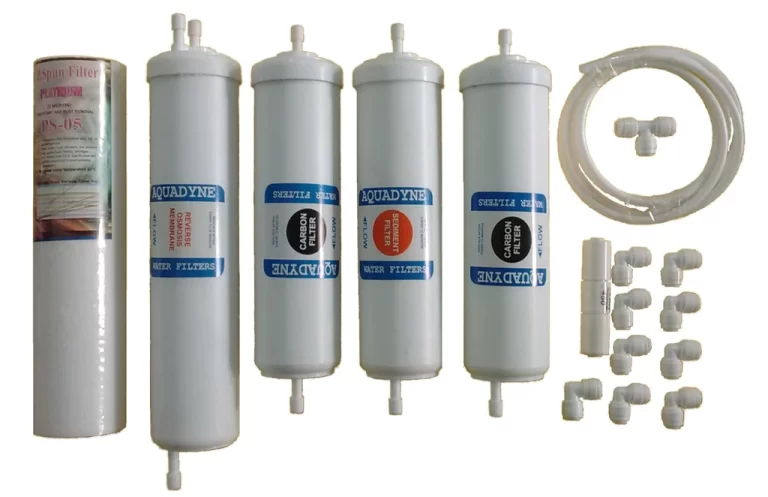Reverse osmosis (RO) filter systems are among today’s most effective water filtration systems. These systems remove impurities and contaminants from water by forcing it through a semi-permeable membrane. As a result, RO filter systems provide clean and safe drinking water, free from pollutants, minerals, and bacteria. This blog will discuss the components and installation of a reverse osmosis water filter system in detail.
Components of RO Filter Systems
The basic components of an RO filter system are a pre-filter, RO membrane, post-filter, storage tank, and faucet. Let’s take a closer look at each of these components:
Pre-Filter: The pre-filter is the first stage of the RO filter system. It removes large particles such as sediment, dirt, rust, chlorine, and other chemicals. Pre-filters can vary in type and size, but they are typically made of sediment filters, carbon filters, or a combination of both.
RO Membrane: The RO membrane is the heart of the system. It is a semi-permeable membrane that filters out contaminants such as dissolved solids, bacteria, and viruses. The RO membrane can remove up to 99% of the impurities from water, depending on the quality of the membrane and the water source. RO membranes come in different sizes and materials, such as cellulose acetate, polyamide, and thin-film composite.
Post-Filter: The post-filter is the final stage of the RO filter system. It removes any remaining taste or odour from the water and particles that may have passed through the RO membrane. Post-filters are typically made of activated carbon or other specialized media.
Storage Tank: The storage tank is where the purified water is stored before use. The tank can vary in size but is typically made of stainless steel or plastic. The size of the storage tank will depend on the amount of purified water you need and the available space in your home.
Faucet: The faucet is the point of use for the purified water. It can be installed on the sink or countertop and comes in different styles and finishes to match your kitchen decor.
Installation of RO Filter Systems
It’s crucial to have a professional plumber install an RO filter system, as attempting to do it yourself can lead to damage or leaks. The first step is to choose a location near the water source with a power outlet. Then, turn off the water supply and install the pre-filter in an easily accessible location.
The RO membrane should be installed next to remove any remaining impurities, followed by the post-filter to improve the water’s taste and odour. The storage tank and faucet can then be installed, and the water supply can be turned back on while checking for leaks or drips.
If issues arise, flushing the system for a few minutes can help remove air bubbles or loose particles. Hiring a professional plumber ensures that the RO filter system is installed correctly and safely.
Reverse osmosis water filter systems are an effective and efficient way to purify your drinking water. By understanding the components and installation of an RO filter system, you can ensure that you have clean and safe water for you and your family. Regular maintenance and replacement of the filters and membrane are necessary to maintain the quality and effectiveness of the system. If you are unsure about installing or maintaining your RO filter system, it is always recommended to consult a professional plumber.



